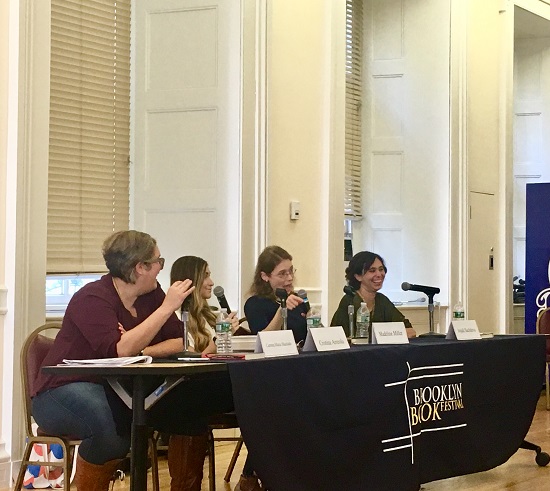At the Brooklyn Book Festival, writers Carmen Maria Machado, Madeline Miller and Anjali Sachdeva discuss the modern myth and the female role therein

From left: Carmen Maria Machado, Cristina Arreola, Madeline Miller and Anjali Sachdeva discuss the “Modern Myth” at Sunday’s Brooklyn Book Festival. Eagle photo by Sara Bosworth
Question: What do you get when you take a deep contemporary dive into the female experience in ancient folklore?
Answer: Genetic engineering, Minotaur C-sections, gastric bypasses — among other things.
In a panel on “Modern Myth” at Sunday’s Brooklyn Book Festival, authors Carmen Maria Machado (Her Body and Other Parties), Madeline Miller (Circe) and Anjali Sachdeva (All the Names They Used for God) spoke with Bustle’s Senior Books Editor Cristina Arreola about what it means to reimagine folktales, fairytales and ancient myths in a contemporary sense.
